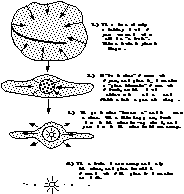This is a schematic showing the forming solar system.
Click on image for full size
C. Alexander
The Formation of the Solar System out of the Primordial Nebula
The solar system contracted out of a rotating cloud of hydrogen and helium gas. The momentum of the rotation flattened the originally round cloud into a disk, somewhat the way a ball of pizza dough can be made flat by spinning it in the air. As it flattened, gaseous material condensed and aggregated to form more solid material. For a diagram showing which material condensed near Saturn, click here.
You might also be interested in:
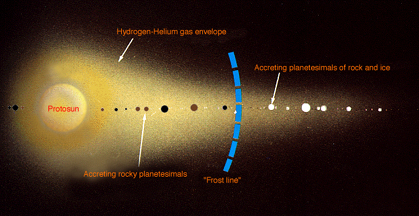
The position of the planets in the solar nebula greatly affected their 1. size and 2. composition. This is because of the effect of how cold it was in the nebula. 1. The nebula was a lot warmer close to
...more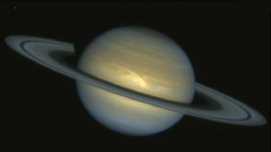
The most important motions in the atmosphere are winds. The major winds in Saturn's atmosphere are the zonal winds which are composed of alternating belts and zones flowing in opposite directions. Belts
...more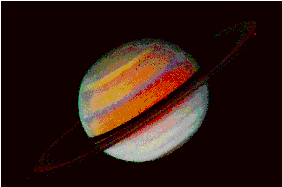
The striped cloud bands on Saturn, like Jupiter, are divided into belts and zones. In a belt, the wind flows very strongly in one direction only. In a zone, the wind flows very strongly in exactly the
...more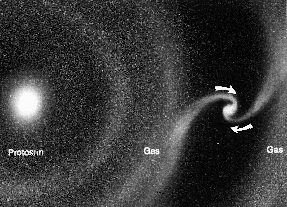
As shown in this picture, while they were forming in the solar nebula, the nucleii of the planets-to-be (called protoplanets) drew material to themselves from the cloud of gas and dust around them. The
...more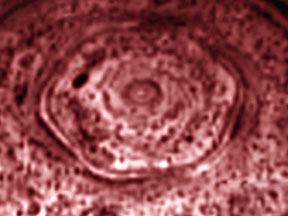
Astronomers have discovered a bizarre, hexagon-shaped feature in the clouds of Saturn near the planet's North Pole. The feature was first seen in images returned by the Voyager spacecraft in the 1980s,
...more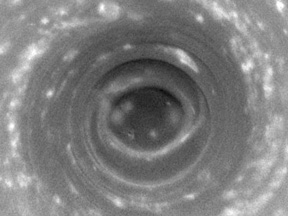
Saturn's South Pole is an extremely stormy and surprisingly warm region. A vast, hurricane-like storm centered on the South Pole dominates the area. Astonishingly, the pole is also warmer than any other
...more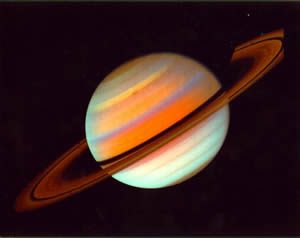
Like the inner planets and Jupiter, Saturn is clearly visible in the night sky. The ancient Greeks named the planet after the god of agriculture and time. It wasn't until 1655, however, that we knew Saturn
...more


